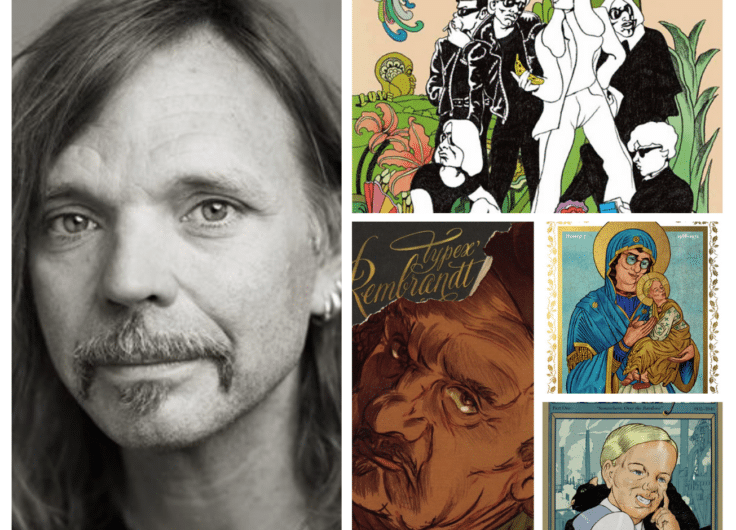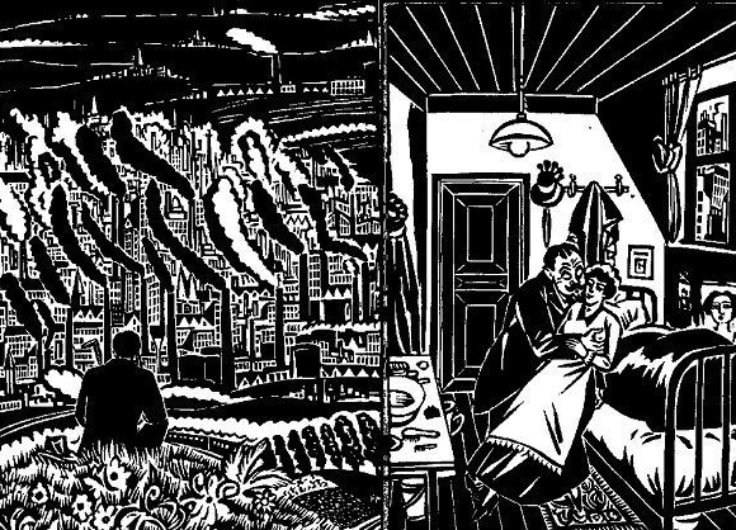Comics Artist Aimée de Jongh Conquers the World
With her graphic novel Days of Sand, comics artist Aimée de Jongh from Rotterdam found her way onto many end-of-year lists in 2021 and has won various readers’ prizes. But her international success particularly stands out. She absorbs influences from all the major comic book traditions and her work is perfectly pitched to target an international readership.
Anyone seeking to describe the career of Aimée de Jongh (Rotterdam, b. 1988) inevitably comes up with skills that do well on the job market, such as productivity and flexibility. From her earliest comics she ventured into all kinds of genres in different media, but always maintaining her own characteristic professionalism and equally characteristic rapid production speed.
 Aimée de Jongh
Aimée de JonghAt the age of only sixteen De Jongh began with the internet comic Aimée TV, a series of short episodes which allowed her to gain experience and to grow up with her first readers. The Haarlem comic book shop Bee Dee published a collection of them in 2005. At that point in her still budding career, De Jongh was primarily influenced by Japanese comic strips. That was noteworthy because at the time very little manga was translated into Dutch. It is now common for young people to read them in English, but fifteen years ago De Jongh was part of an enthusiastic niche group of young readers who were perfectly happy to read manga in English or even French. Gradually more and more contributions of her own have appeared among the Dutch-language comic magazines, where her evolving metier can be followed.
From snippets to a graphic novel
De Jongh first reached a broader Dutch readership with her daily Snippers (‘Snippets’ 2012-2017), a gag cartoon in the Dutch newspaper Metro, where she clearly had no trouble coming up with a daily point. She targeted familiar scenes with comics about two young adults sharing a house, the girl named Aimée. For the daily episodes De Jongh took inspiration from minor incidents in her own life. Between 2013 and 2017 nine volumes of Snippers were published in album form and the series also gained her a translation, with the first album published in French as Coloc’ (2014).
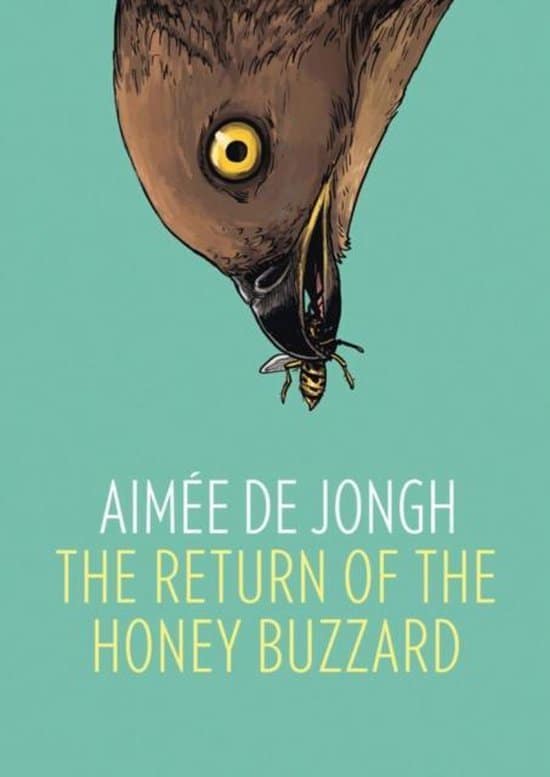
Even during the daily newspaper period of Snippers,
De Jongh was already working on a longer story. The Return of the Honey Buzzard (2014) received rave reviews and was translated into five other languages, including English, French and Spanish. It also won international prizes. Interweaving different narrative layers, The Return of the Honey Buzzard is an ambitious book. A depressive book dealer goes bankrupt and empties his warehouse, but De Jongh has him meet a mysterious girl. She also introduces the metaphor of the honey buzzard, a bird of prey that according to the story never travels with its partner, to ensure that one parent always remains for the young if anything should go wrong.
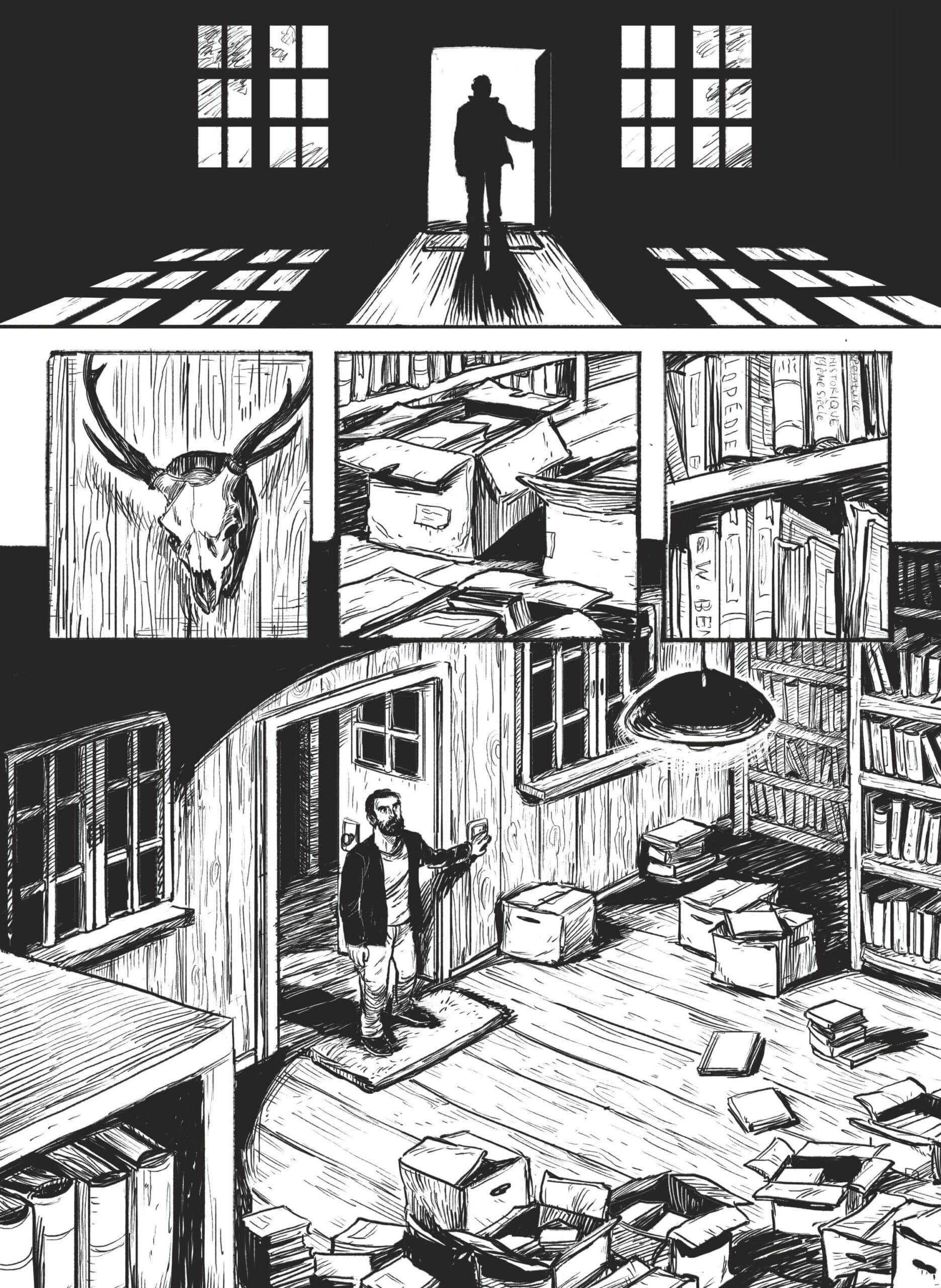 Page from 'The Return of the Honey Buzzard'
Page from 'The Return of the Honey Buzzard'© Aimée de Jongh / SelfMadeHero
The black and white graphics still exhibit some problems with perspective and some drawings which are clearly less perfectly finished than is customary in the cultivated French tradition, which remains the dominant model in much of Europe. The narrative rhythm, by contrast, is already really good. De Jongh takes the space to invoke emotions with natural scenes which do not directly contribute to the plot. The term graphic novel is over-used but The Return of the Honey Buzzard does exhibit one resemblance to a typical novel: psychological depth is important.
De Jongh’s transition to the graphic novel turns out not to be an exclusive choice. In 2016 she surprised her readers with Reborn, an adventure comic in colour that brought together influences from her childhood: on the one hand classic Belgian comics published by Dupuis and on the other hand Japanese work. Like one of De Jongh’s favourite albums, Als in een droom (‘As if in a dream’) from the Robbedoes en Kwabbernoot series by comic strip writers Tome and Janry, Reborn also raises questions about cloning humans. Yet these issues remain subordinate to the action, as befits an adventure comic. In accordance with the rules of the genre, the psychology and well-developed characters of The Return of the Honey Buzzard are absent in Reborn. Published by a small publishing house and never translated, Reborn no longer appears on the author’s website, which at the very least suggests that De Jongh herself is no longer satisfied with it.
Intimate drawings
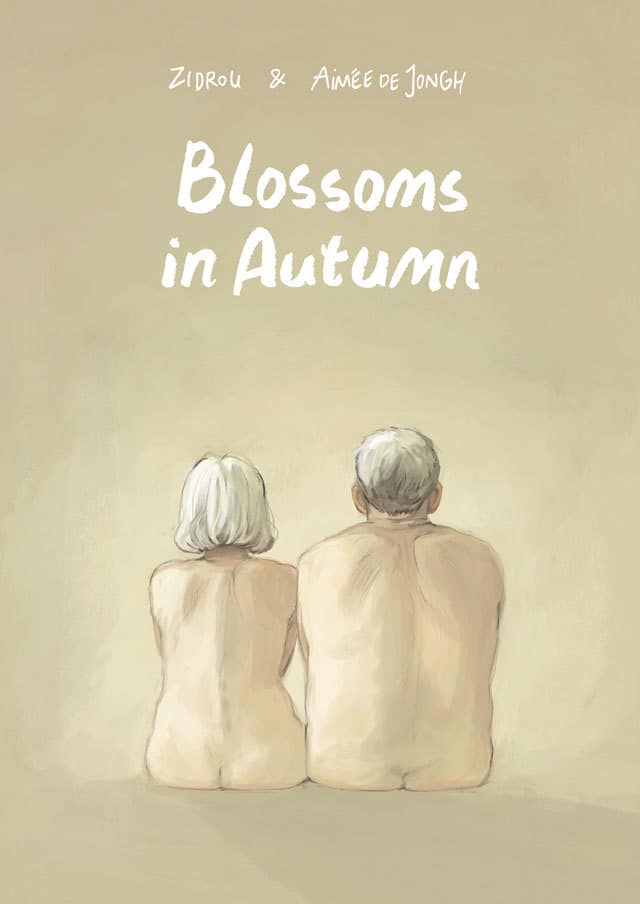
© Aimée de Jongh / SelfMadeHero
Her great step forward after The Return of the Honey Buzzard eventually turned out to be Blossoms in Autumn (2017), for which she only provided the illustration (in colour). The scriptwriter Zidrou (Benoît Drousy), originally from Brussels and now based in Spain, whose work is popular in the French comic strip world, wrote the romantic story for her about two people in love, both around the age of sixty and single. Their love story is primarily surprising due to their age. Those around the main characters do not see the relationship coming and do not necessarily react positively. Blossoms in Autumn is a fairy tale in Zidrou’s preferred style, too sweet for some readers, but due to the relative originality of the subject and the way it is developed, Aimée de Jongh reached a broad French readership with it far more easily than would have been possible without a famous scriptwriter. Comic readers took the book to heart, resulting in international prizes and additional print runs.
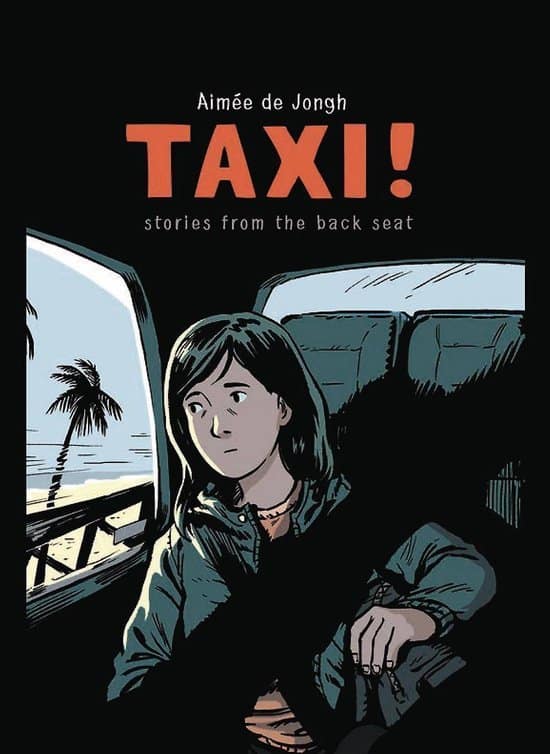
© Aimée de Jongh / Conundrum Press
In comparison with The Return of the Honey Buzzard and Blossoms in Autumn, the graphic novella Taxi! Stories from the Back Seat (2019) might seem like a stop-gap, of less importance in building De Jongh’s oeuvre, but nothing could be further from the truth. It is precisely in this short book, where she presents herself as the main character, that she fully reveals her talent. In interweaving conversations with taxi drivers all over the world, De Jongh builds up a deeply human story. Instead of representing the stories separately, she associates fragments with comparable conversational themes. As transitions, she draws wordless little pictures which offer the reader the opportunity to allow the conversations to sink in.
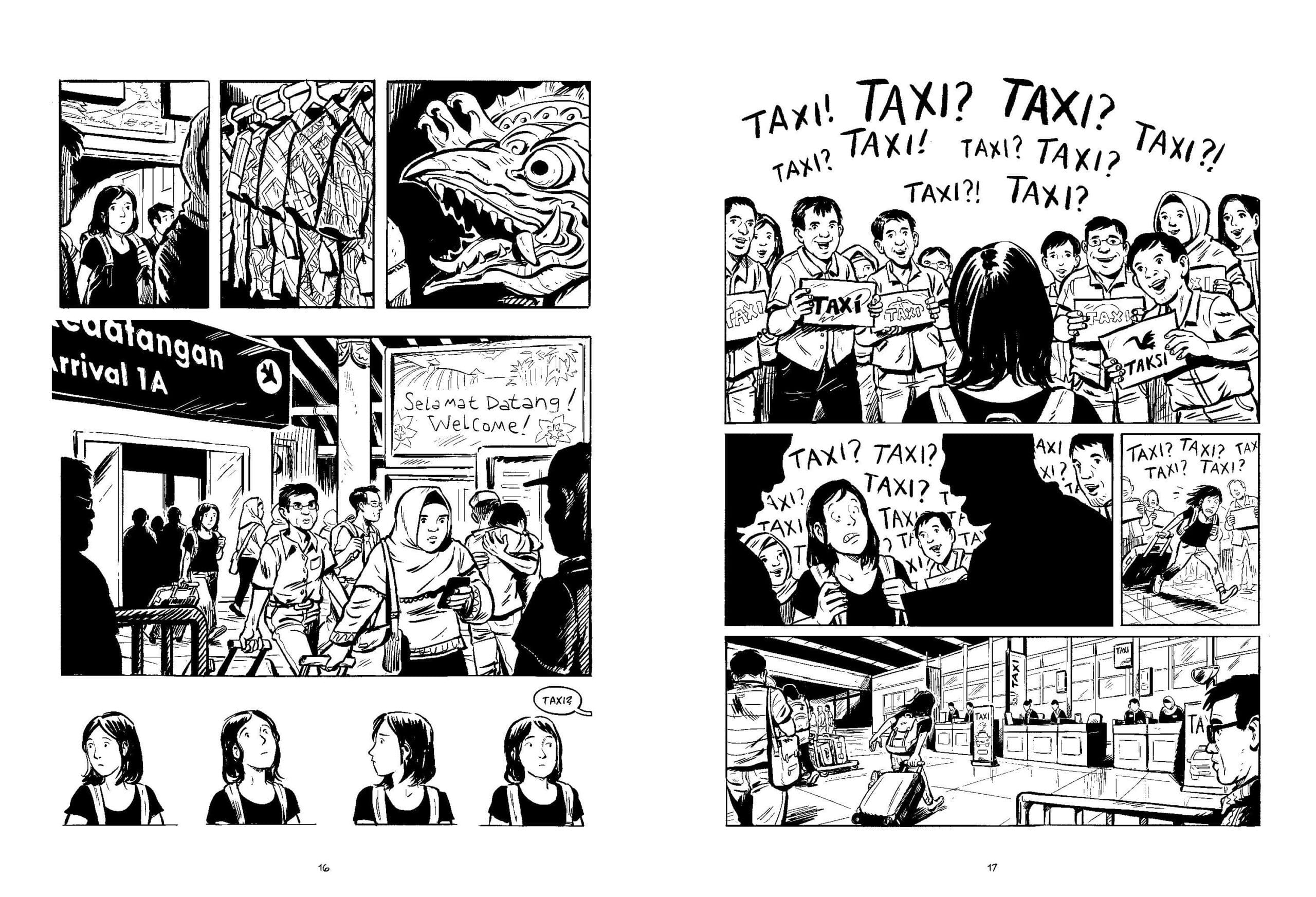 Page from 'Taxi! Stories from the Back Seat'
Page from 'Taxi! Stories from the Back Seat'© Aimée de Jongh / Conundrum Press
The choice of austere black and white stands out here, setting up expectations in potential readers. There is no spectacle to be found in Taxi!. The emphasis is on what is small, intimate. Indeed autobiographical influences were already creeping in in Aimée TV and Snippers, but in Taxi! De Jongh reveals more of her character and her past. She connects her own life with major events that reverberated throughout the world, such as the terrorist attacks in Paris. De Jongh’s technical progress since The Return of the Honey Buzzard is also impressive.
Ambition and limitations
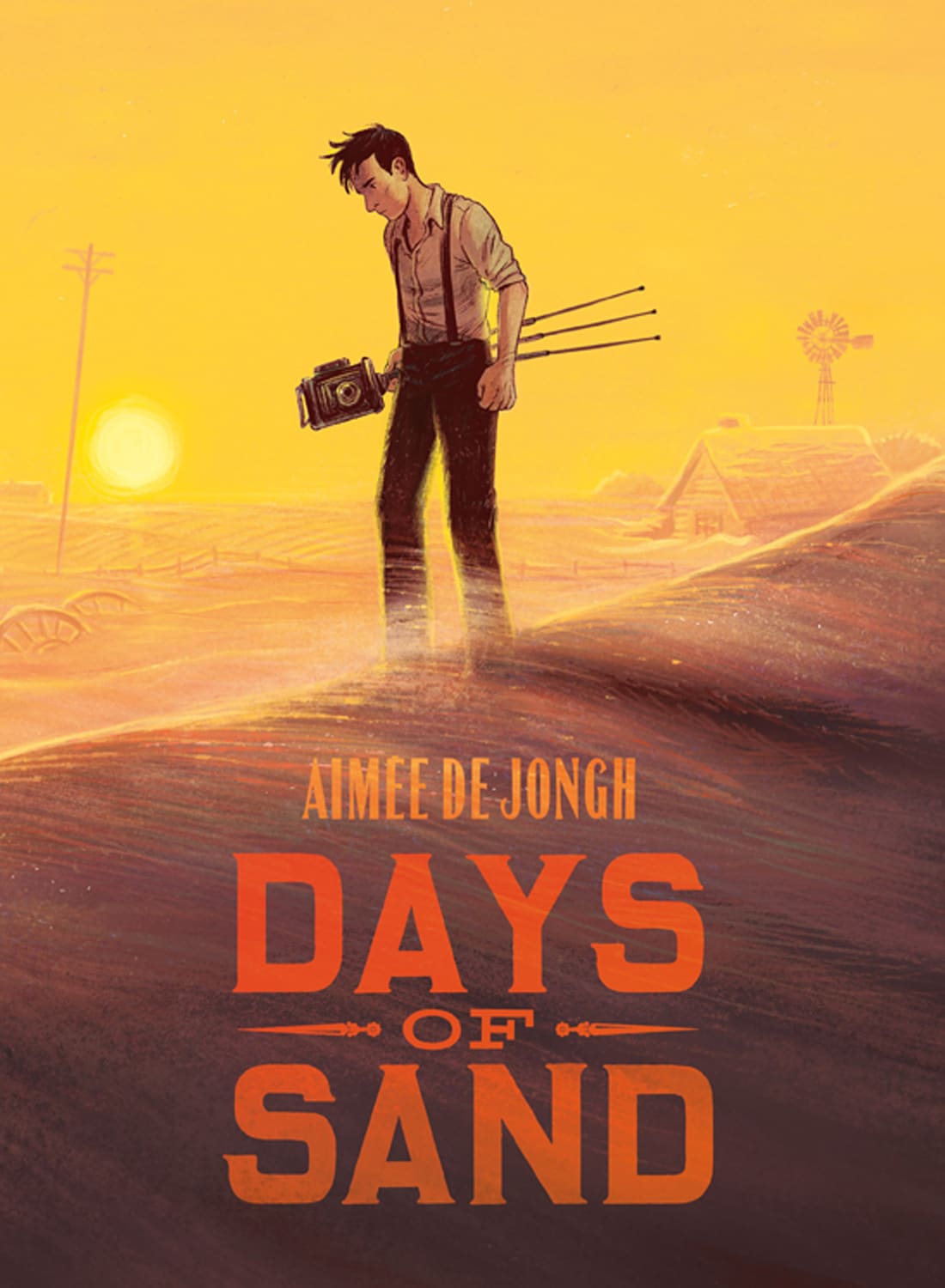
© Aimée de Jongh / SelfMadeHero
Aimée de Jongh’s latest book, Days of Sand (2021), is also the most ambitious, with almost three hundred pages in colour. This time she presents historical fiction against the backdrop of an environmental disaster in Oklahoma during the Great Depression. Due to intensive farming methods and a lack of rain – a situation occurring in many places in the world in recent years – desertification arises in the broader region around Oklahoma. Frequent storms cover everything in a layer of sand and dust, even the objects in cupboards inside houses. A New York agency sends a new photographer to the area to record the misery of the people in sensitive images, but the young man feels incapable of doing this. His initial encounters with the farmers are awkward, as they do not trust him. When he meets a young widow, he picks the side of the local people. He would rather help them with their daily battle with the elements than successfully complete his professional task. Photography as an art form, which initially seemed to interest him, now leaves him cold.
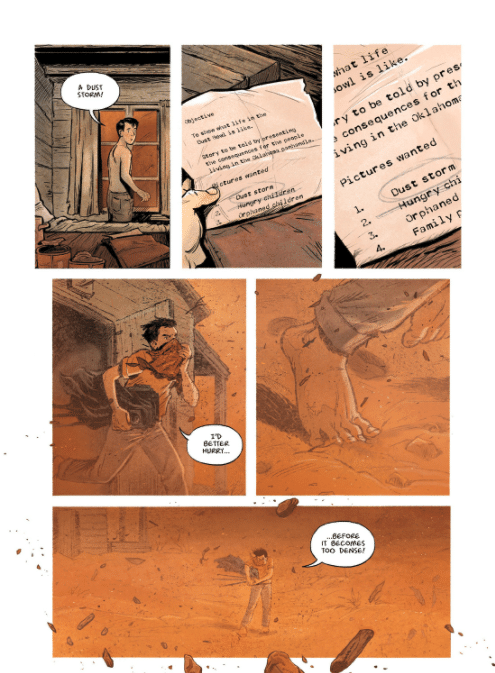
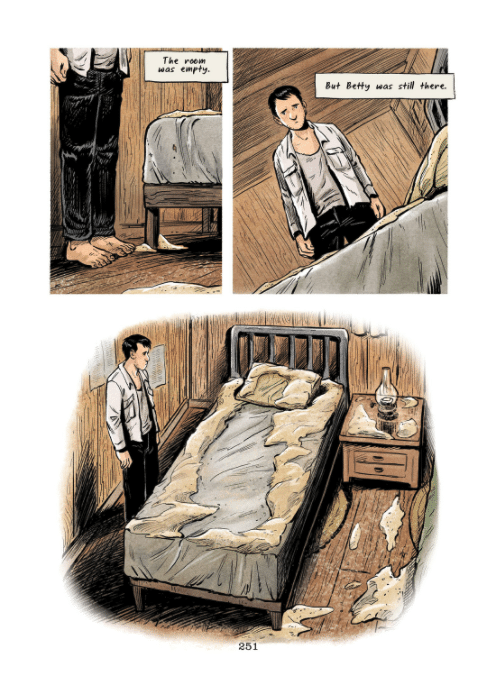 Pages from 'Days of Sand'
Pages from 'Days of Sand'© Aimée de Jongh / SelfMadeHero
The enormous diversity of the United States has always fascinated De Jongh, who has read a great deal about the Dust Bowl period. Another successful point is the portrait of a naïve young artist who assumes that his work alone is sufficient to change the world. The author has indicated in interviews that she is no stranger to the experience of the photographer in the story. She herself experienced the limitations on her capabilities when in 2016, along with fellow illustrator Judith Vanistendael, she was invited to draw daily life in refugee camps on Lesbos. She soon realised that her drawing style was not realistic enough to adequately represent the problematic situation. In comparable circumstances, the photographer from Days of Sand
comes to the conclusion that his art has no point whatsoever.
International readership
Fortunately, De Jongh did not make a similarly drastic decision after Lesbos. Nor does she have any reason to. Her international readership is growing. There are various translations available, including an English translation of Days of Sand in book form (following an earlier electronic edition). She has no shortage of options, as she has already made short animated films for Dutch television and The Return of the Honey Buzzard
has been filmed.
Nevertheless, De Jongh’s future seems set to lie in the kind of graphic novels she has been producing successfully in recent years, with their accessible drawing style and narrative. With her grounding in American, Japanese and European comics, she expresses herself universally and as authentically as possible in the emotional life of her characters.
Mentioned publications translated into English
- Europe’s Waiting Room, SelfMadeHero
- The Return of the Honey Buzzard, SelfMadeHero
- Blossoms in Autumn, SelfMadeHero
- Taxi! Stories from the Back Seat, Conundrum Press
- Days of Sand, SelfmadeHero


